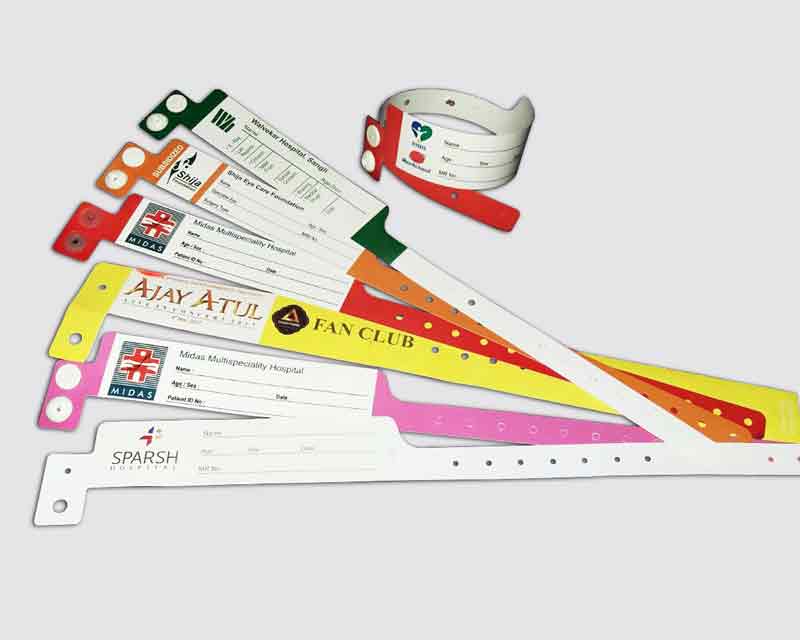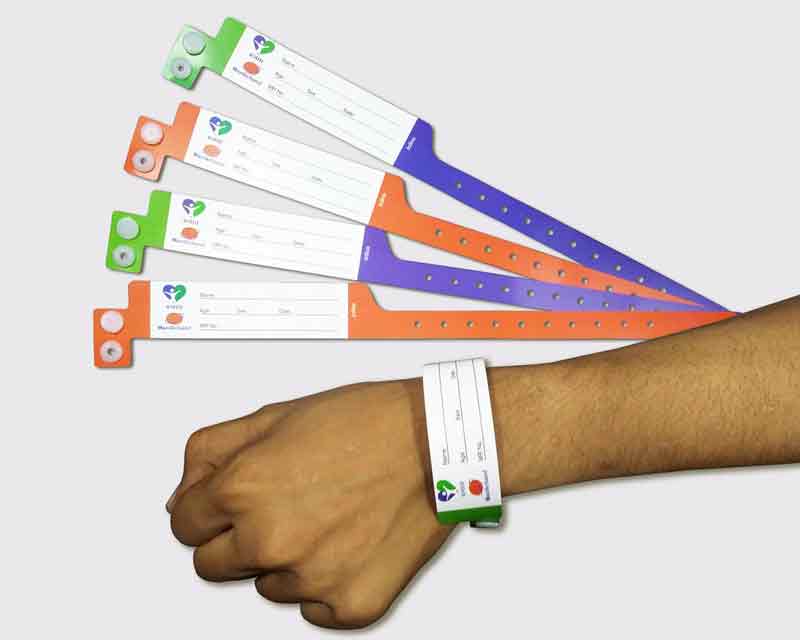Checking Out the Various Kinds of Patient Identification Band Utilized in Medical Facilities
In the elaborate globe of medical care, the important role of Patient Identification bands usually goes undetected. These bands, varying from straightforward paper wristbands to advanced RFID bands, create the backbone of Patient security protocols, guaranteeing accuracy in Patient Identification. Yet, the vast variety of these bands, each with its special benefits and restrictions, is often forgotten. As we browse through this subject, one may obtain insight right into the refined complexities and crucial importance of such bands in medical centers.
Comprehending the Significance of Patient Identification Bands
While they may seem like mere devices, Patient Identification bands play an important duty in medical facilities. These bands offer as a vital tool for validating Patient identity, protecting against medical errors connected to misidentification. The bands typically show essential info such as the Patient's name, age, blood group, and any kind of known allergies. They enable health care specialists to rapidly access this important details, therefore helping with precise and prompt clinical therapy. Patient Identification bands additionally help in streamlining administrative tasks, guaranteeing precise record-keeping and invoicing. In spite of their simpleness, these bands personify the concept of Patient security, a cornerstone of quality health care. Without them, the risk of clinical errors, and subsequently, Patient harm, might considerably enhance.
Conventional Paper Wristbands: Their Use and Limitations
Typical paper wristbands have actually been a staple in Patient Identification across various clinical facilities. While their usage is prevalent, they nurture certain limitations that might impact their performance in Patient management. This section will concentrate on the range of their application and the inherent drawbacks connected with their usage.
Paper Wristbands: Use Scope
In the world of Patient Identification, paper wristbands have long held a critical duty. These bands are generally utilized in outpatient setups, where the Patient's stay is short-term. In spite of developments in technology, the humble paper wristband stays a cost-efficient and reliable solution for Patient Identification in numerous medical care circumstances.
Limitations of Paper Wristbands
Despite their prevalent use, paper wristbands are not without their disadvantages. Their physical longevity is just one of the substantial constraints. Direct exposure to water, sweat, or harsh handling can make them unreadable or perhaps create them to degenerate. Furthermore, paper wristbands often lack the technological abilities of even more modern options, such as barcoding or RFID chips, limiting their functionality to just presenting written information. The inability to upgrade or customize the data on the wristband is another shortcoming. If the info is handwritten, legibility can be endangered, leading to prospective misidentification. Paper wristbands can cause pain or skin irritability to some clients, especially when used for extended durations.
Barcoded Wristbands: Improvements in Patient Identification
While Patient Identification has long been an essential facet of healthcare, the arrival of barcoded wristbands represents a significant jump ahead. These bands leverage the simplicity of barcoding innovation, enabling Patient info to be promptly scanned and accessed. They improve the rate and precision of Patient Identification, reducing the threat of medical errors connected to misidentification. Barcoded wristbands are affordable, simple to generate, and eliminate handwriting errors typical with hand-operated systems. However, they are not without limitations. While they supply renovations over traditional bands, the barcode can end up being smudged or used, rendering it unreadable. Despite this, barcoded wristbands remain a crucial device in modern healthcare settings, representing the junction of modern technology and Patient treatment.
Superhigh Frequency Identification (RFID) Bands: a Step Towards Futuristic Healthcare
The advancement of Patient Identification bands has caused the introduction of Radio Regularity Identification (RFID) Bands (patient identification band). These innovative tools existing key benefits for medical care facilities, providing a more reliable and highly advanced means of Patient Identification. The execution of RFID in health care is a considerable step in the direction of a much more futuristic strategy to Patient management and safety and security
Recognizing RFID Bands

RFID Bands: Key Benefits
Largely, these bands improve Patient safety by supplying exact, instantaneous Identification, consequently reducing medical errors. RFID bands can keep a huge quantity of Patient data, consisting of clinical background and allergic reactions, enabling personalized care. Generally, RFID bands stand for a substantial innovation in Patient Identification modern technology, profiting both people and medical care companies.
Carrying Out RFID in Medical Care
As we enter a technologically sophisticated age, the application of RFID bands in health care ends up being progressively crucial. These bands give a smooth means to track and identify patients, ensuring their safety and security and boosting performance in therapy procedures. RFID bands use many benefits over conventional Identification techniques. They can keep a large amount of information, consisting of the Patient's medical history and therapy strategies, which can be quickly accessed by doctor. This data aids medical professionals make notified decisions concerning the Patient's click for more therapy plan. RFID bands reduce clinical mistakes by supplying precise Patient Identification, which is important in avoiding misdiagnosis or incorrect medicine administration. Thus, the application of RFID bands is a substantial step towards improving Patient safety and health care delivery.

Color-Coded Wristbands: Helping in Quick and Accurate Medical Diagnosis
In the busy atmosphere of a medical facility, color-coded wristbands have become crucial tools for swift and precise Identification of a person's clinical condition. These wristbands, used by clients, carry specific shades that represent different clinical conditions or statuses. Red might indicate allergic reaction dangers, while yellow could symbolize a fall threat. This system is designed to use immediate aesthetic hints to healthcare service providers, boosting Patient safety and care high quality. In emergency circumstances, making use of these wristbands permits for rapid decision-making. The performance of color-coded wristbands depends on the uniformity of color analysis across health care institutions, needing usual standards for regular application.
Methods for Reliable Execution and Management of Patient ID Bands
Attaining ideal usage of Patient Identification bands demands a well-structured approach for their application and monitoring. Patient education and learning is also crucial; patients must recognize the function of the bands and the need for their constant wear. It's necessary to have a backup strategy in place, such as barcode scanning or biometrics, to make sure that Patient Identification is never jeopardized.
Final thought
Patient Identification bands are important in medical centers to guarantee safety and security and precision. Typical paper, barcoded, RFID, and visit this page color-coded wristbands each hold unique benefits, varying from cost-effectiveness to sophisticated information storage and instant clinical alerts. Effective execution and management of these bands can dramatically lower clinical errors, enhance effectiveness, and enhance overall Patient treatment. Therefore, understanding and making use of these Identification tools is vital for keeping high criteria in health care.
These bands, differing from straightforward paper wristbands to sophisticated RFID bands, develop the foundation of Patient safety and security methods, ensuring precision in Patient Identification.The evolution of Patient Identification bands has brought concerning the emergence of Radio Frequency Identification (RFID) Bands. In Related Site general, RFID bands represent a significant development in Patient Identification technology, benefiting both patients and healthcare companies.
RFID bands lower clinical mistakes by supplying precise Patient Identification, which is essential in avoiding misdiagnosis or wrong medicine management. Patient education is also vital; people have to recognize the function of the bands and the requirement for their constant wear.